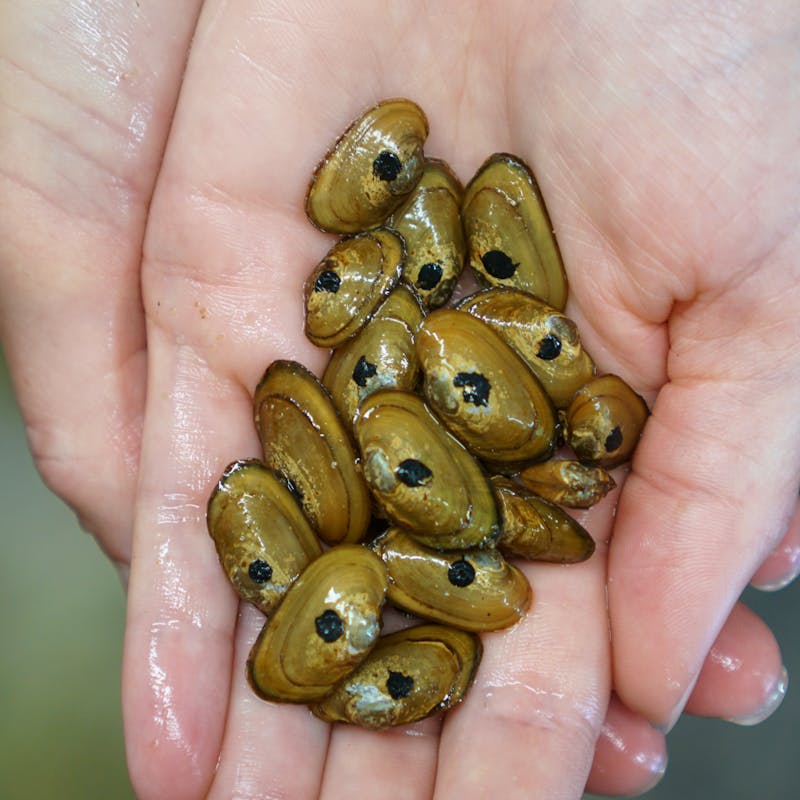Cumberland monkeyface. Rough rabbitsfoot. The shiny pigtoe. They’re not dance moves – they’re mussels! And they are a just a few of the colorfully-named aquatic species that make the lakes and streams of the Appalachian Mountains their home. Unfortunately, these mussels share another quality with over 50 aquatic crayfish, fish, mussel, and salamander species native to central Appalachia – they are listed on the U.S. Endangered Species List as threatened or endangered. While many factors can imperil species, it is no coincidence that Appalachia is home to both an abundance of imperiled species and extensive surface mining, including mountaintop removal mining and valley filling– a coal extraction practice whereby the tops of mountains are literally blasted away and dumped into adjacent valleys, burying streams.
Coal’s detrimental impact on the environment and human health has been well documented for decades. Coal burning creates acid rain, contributes to mercury pollution, and generates soot linked to human respiratory illnesses and deaths. And as a greenhouse gas-emitting process, burning coal contributes to climate change. In addition to the continental scale impacts of burning coal, coal extraction has also historically been detrimental to wildlife. Surface mines destroy wildlife habitat, and mountaintop removal mining severely impairs waterways. Through both sedimentation and the discharge of toxic substances like lead and selenium, water quality can be severely degraded by nearby mining. Declines in aquatic species is an indication that these waters may also be unsafe for human communities, too. Defenders’ Center for Conservation Innovation demonstrated the relationship between mining and measures of water quality in a recent report that looked at the importance of this relationship to aquatic species like mussels, fish, crustacean, and snails.
From 2017 to 2021, use of coal in the United States is projected to have declined 18% despite determined political efforts to revive the industry by stripping regulations protecting environmental and human health. Historically, coal played an important role in the global economy, powering the Industrial Revolution and ushering in the age of electricity, but it is no longer the most economically viable source of energy. While some of this shift is due to natural gas fracking, the ascension of renewable energies, and their benefits to the environment, has coincided with coal’s decline. The Energy Information Administration predicts renewables will surpass coal in U.S. energy production in 2021.
To date, conservationists have largely focused on closing coal-fired power plants, opposing new coal mining and remining, and limiting the impacts of both active and closed mines – and rightfully so. However, we also need to start considering a new and exciting question – how can we best restore abandoned coal mines for environmentally beneficial purposes?
As the coal industry declines, current and future mine abandonment presents an opportunity to restore Appalachian ecosystems and economies. Mine restoration takes dedicated effort to contain and remove pollutants, backfill pits, and ensure the area is revegetated with native species. For some sites, reclamation and remediation efforts might not be enough to restore native ecosystems. Fortunately, these sites can be the perfect place for new renewable energy installations. Such efforts might not only help recover imperiled species like the Cumberland monkeyface, rough rabbitsfoot, and shiny pigtoe, but also help a region historically economically dependent on coal to proactively transition to a renewable energy economy.
These aren’t just idealistic goals; a pot of money is available to fund this work. As part of their operating permits, surface mining companies pay into the Abandoned Mine Land program, a kind of mine retirement fund designed to remedy hazards and environmental degradation caused by mines. The program has collected $11.3 billion since it was enacted in 1977. While most of this has been spent on state grants, emergencies, and other operational costs, over $2.3 billion remains unappropriated. By comparison, the 2020 Presidential Budget proposes to appropriate $1.3 billion to the entire U.S. Fish and Wildlife Service, the primary agency administering the Endangered Species Act, and $1.5 billion to states for wildlife conservation and restoration. This is to say: there are substantial resources available that could greatly benefit Appalachian communities – both human and wildlife – if these funds are used wisely.
If conservationists, state and local governments, community advocates, and lawmakers think proactively and progressively about how we might best transition away from coal and heal the scars it has left, both people and pigtoes can thrive in Appalachia for years to come.











